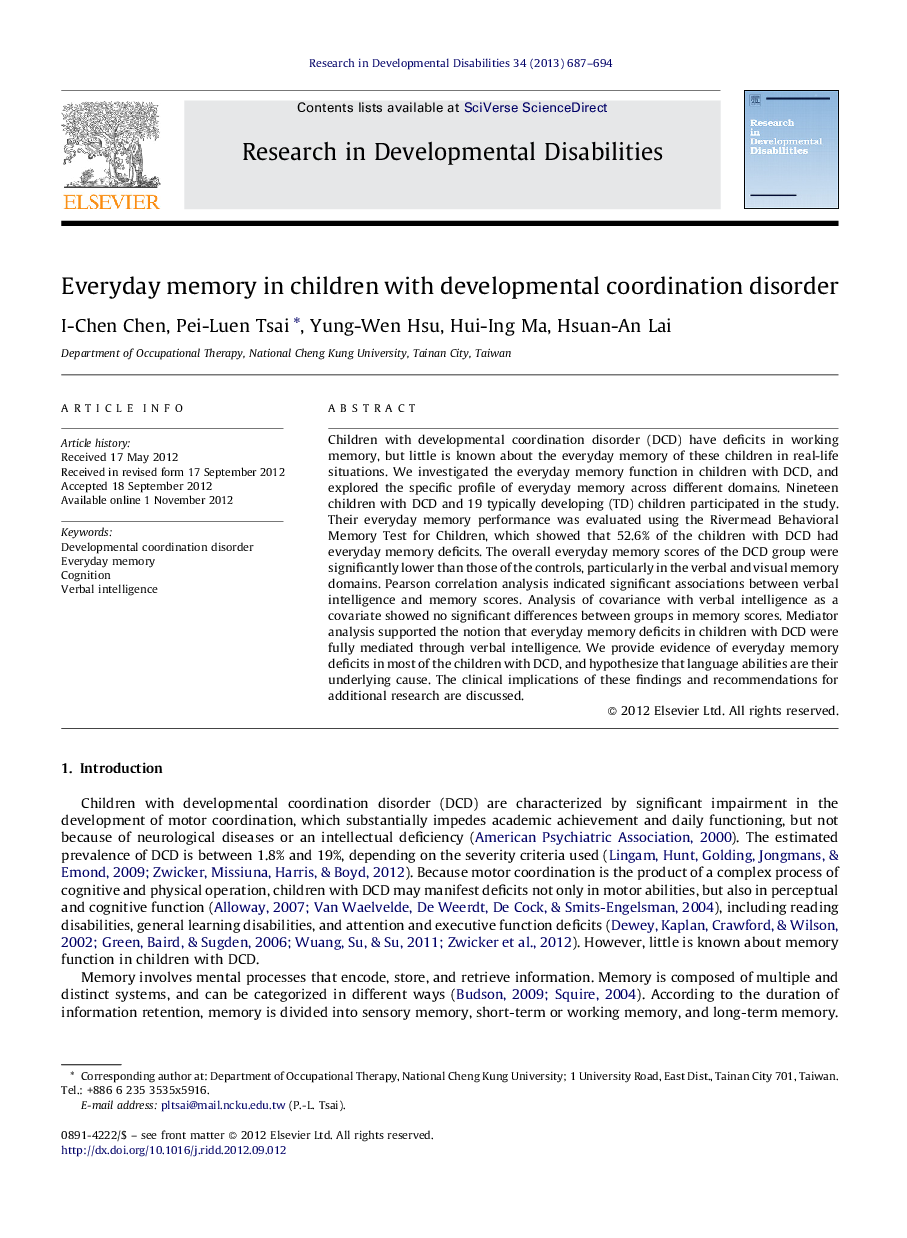ترجمه فارسی عنوان مقاله
حافظه روزمره در کودکان مبتلا به اختلال هماهنگی رشدی
عنوان انگلیسی
Everyday memory in children with developmental coordination disorder
| کد مقاله | سال انتشار | تعداد صفحات مقاله انگلیسی |
|---|---|---|
| 39378 | 2013 | 8 صفحه PDF |
منبع

Publisher : Elsevier - Science Direct (الزویر - ساینس دایرکت)
Journal : Research in Developmental Disabilities, Volume 34, Issue 1, January 2013, Pages 687–694
ترجمه کلمات کلیدی
اختلال هماهنگی رشدی؛ حافظه روزمره؛ شناخت؛ هوش کلامی
کلمات کلیدی انگلیسی
Developmental coordination disorder; Everyday memory; Cognition; Verbal intelligence

